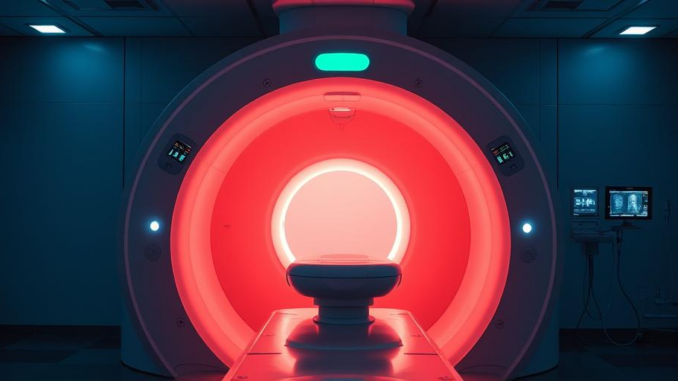
Summary
This article discusses the potential cancer risk associated with CT scans due to radiation exposure, the variability in radiation dosages across facilities, and new Medicare regulations mandating data collection and sharing on radiation emissions from CT scanners. It also explores the ongoing debate between researchers and radiologists regarding the balance between diagnostic benefits and radiation risks, and emphasizes the importance of patient awareness and informed decision-making.
** Main Story**
Okay, let’s talk CT scans. They’re undeniably amazing for diagnosing all sorts of things, giving doctors a detailed look inside the human body, you know? But, there’s a catch – radiation exposure. While one scan seems like no big deal, multiple scans over time? That’s where the risk starts to creep up. And honestly, it’s something we need to be more aware of.
Think of it this way: It’s like sun exposure. A little bit of sunshine feels great, but too much, too often, and you’re looking at potential problems down the line. It’s the cumulative effect that can be worrisome.
Now, get this. The radiation doses can vary wildly between facilities. I’m talking a ten- to fifteen-fold difference for the same scan. Crazy, right? You’d think there’d be more standardization by now. It kind of makes you wonder, doesn’t it, if some places are just being overly cautious or if others are cutting corners. Some estimates even suggest CT scans might be responsible for around 2% of all cancers, and, given how frequently they’re used now, that number’s probably higher. And by 2025, we’re looking at nearly 100 million scans a year in the US, mostly on the over 60s.
New Rules and Pushback
So, the good news? There’s a push for more transparency, particularly with Medicare. New regulations were introduced in 2025, requiring hospitals and imaging centers to collect and share data on radiation emissions. The aim is to standardize doses and reduce unnecessary exposure. Makes sense, doesn’t it?
The Centers for Medicare & Medicaid Services (CMS) actually contracted with UCSF to figure out the best ways to measure and assess CT scans. A smart move, if you ask me. However, not everyone’s thrilled. Some radiology associations are pushing back, saying it’s too complicated and expensive. I get their concerns, I really do. It’s extra paperwork and expense but, on the other hand, isn’t patient safety worth the effort?
CMS has listened, though. They’re now allowing multiple vendors to handle data collection, which should open things up and ease some of the burden, which, I think, is sensible.
Finding the Right Balance
Of course, radiologists aren’t trying to downplay the risks. They know radiation is a concern. It’s more that CT scans are vital for diagnosing serious conditions, guiding procedures, and preventing misdiagnoses. It’s a balancing act. How do we get the diagnostic information we need without putting patients at unnecessary risk?
Experts are saying patients need to have open conversations with their doctors about the pros and cons of CT scans. Are there alternative imaging methods, like MRI or ultrasound, that could work instead? That’s a conversation we all need to be prepared to have. Research is also underway to lower radiation doses while maintaining image quality. Think about lung cancer screening, for instance. Low-dose CT scan protocols are being explored, which is promising.
Empowering Ourselves
The lack of standardized doses really highlights why we, as patients, need to be proactive. You should feel comfortable asking your doctor about the radiation dose you’ll be getting, what they’re doing to minimize it, and if there are other options. Don’t be afraid to speak up! Remember a few years back when I had that weird pain in my side? I asked my doctor about the radiation dose for the CT scan he was recommending, and he was more than happy to explain it. Knowing I was informed made me feel much better about the process.
Furthermore, keep track of your medical imaging history. It’s easy to forget over time, but knowing your cumulative exposure is important. You can maintain a simple record and share it with your healthcare providers. Oh, and don’t forget to ask about the type of CT scanner being used and the facility’s dose optimization protocols.
Ultimately, it’s about informed consent. We need to be aware of the risks and benefits, ask the right questions, and work with our doctors to make the safest, most appropriate decisions for our health. Because, let’s face it, our health is our most valuable asset, isn’t it?


Knowing my luck, if I asked about alternative imaging, my doctor would suggest interpretive dance. “Show me where it hurts, but *artistically*.” Suddenly, that CT scan doesn’t sound so bad!
Haha, that’s a hilarious image! It does highlight a real concern though – finding the right balance between diagnostic needs and patient comfort. Maybe technology will soon give us non-invasive options that are less ‘interpretive’ and more informative! What innovative imaging techniques are you most curious about?
Editor: MedTechNews.Uk
Thank you to our Sponsor Esdebe
The variability in radiation doses across facilities is certainly concerning. The push for greater transparency and data collection seems like a crucial step towards standardization and ultimately, improved patient safety. Perhaps AI-driven dose optimization could further refine imaging protocols in the future?
That’s a great point about AI-driven dose optimization! It’s exciting to think about how technology can further refine imaging protocols and minimize radiation exposure. Hopefully, AI can help us achieve even more precise and personalized approaches to medical imaging in the future. This can help us ensure the best possible outcomes for patients!
Editor: MedTechNews.Uk
Thank you to our Sponsor Esdebe
Ten- to fifteen-fold dose variation? Seriously? So, it’s basically radiation roulette depending on which facility you end up at? Guess I’ll start shopping around for CT scans like I’m picking out wine. “Ooh, this scan has a *hint* of radiation!”